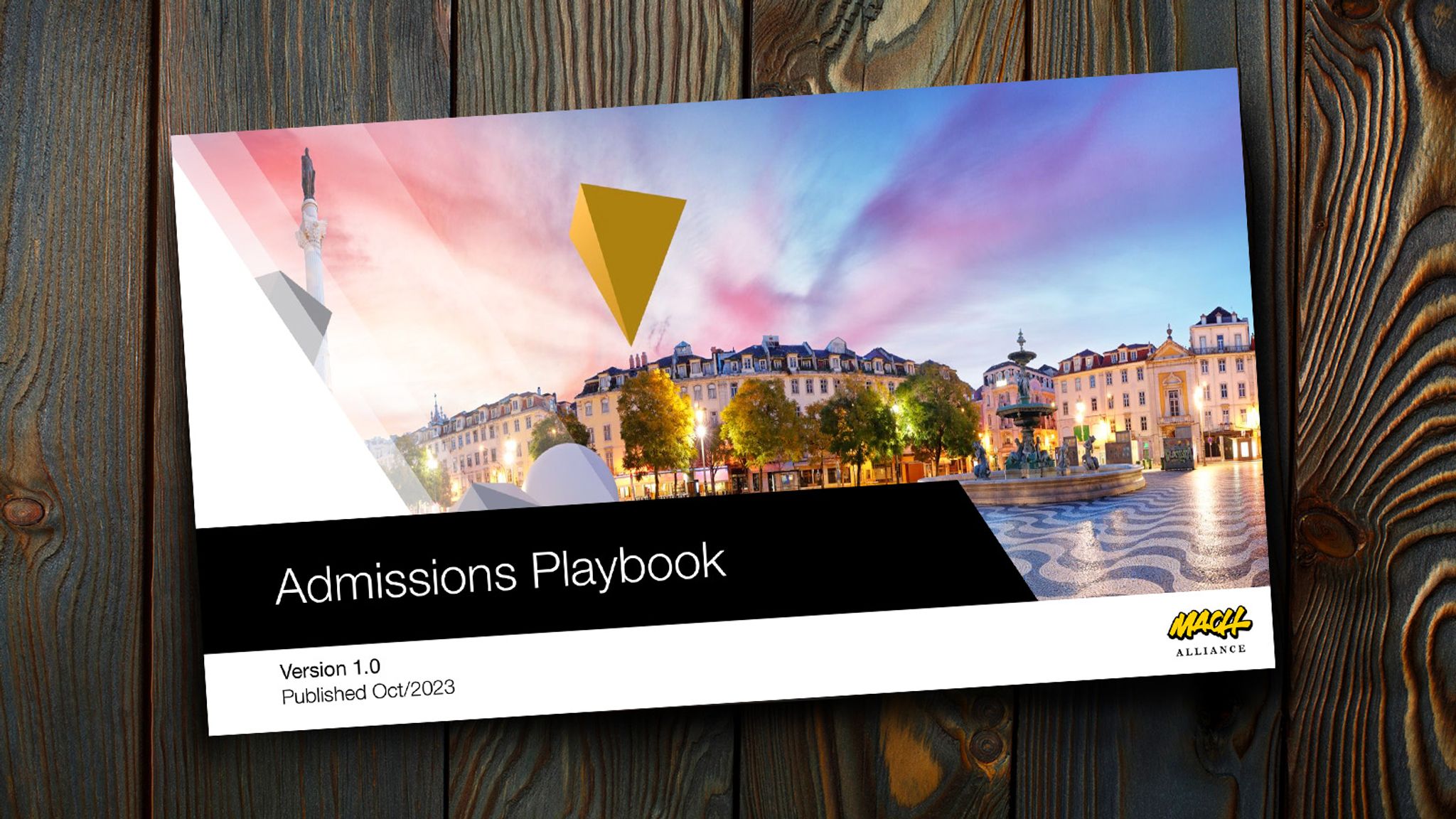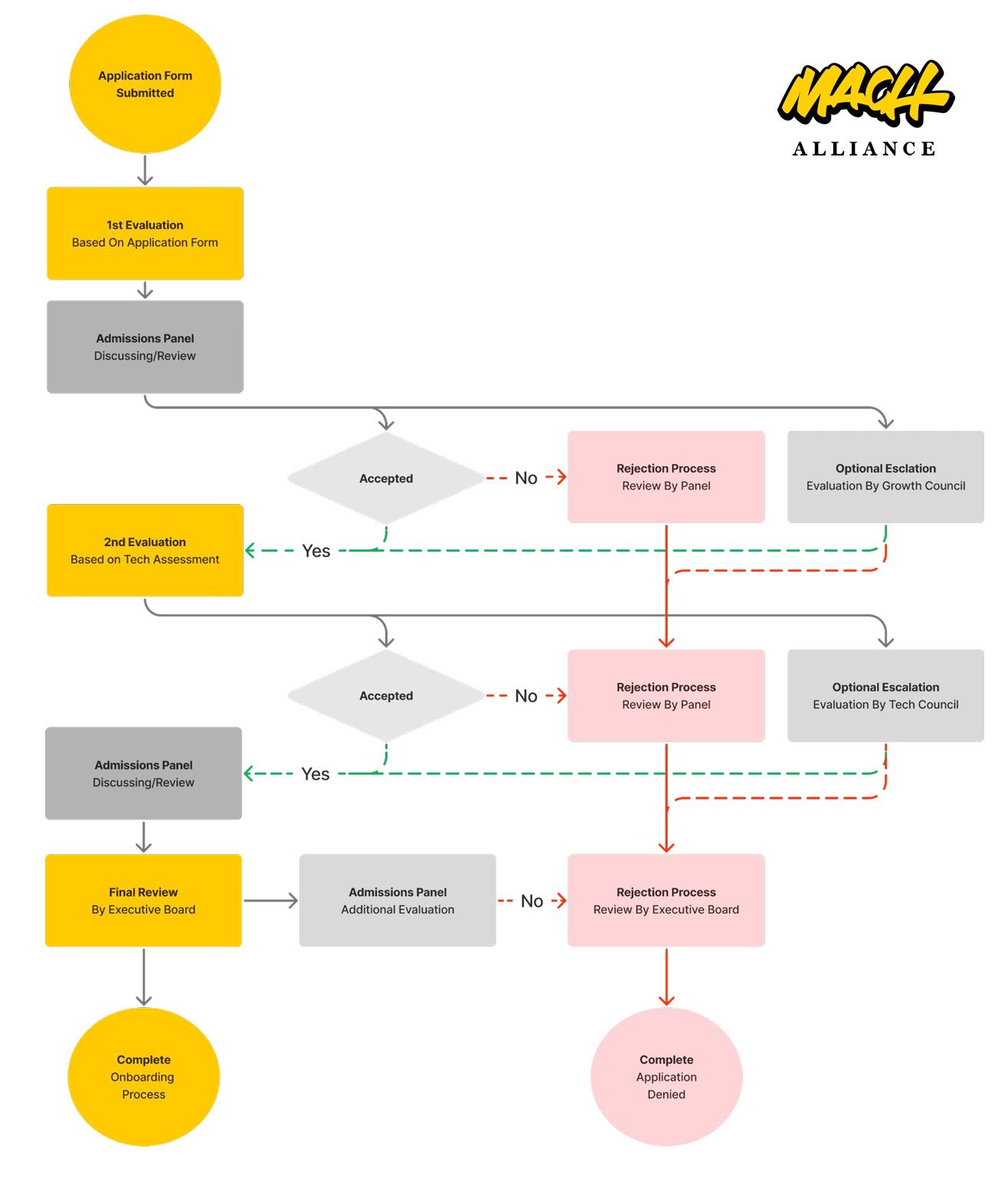New MACH Alliance Admissions Playbook Brings Greater Clarity to Certification Process

The industry organization is reinforcing its promise to safeguard MACH technology standards as composable achieves early majority status.
Over the past few years, we've steadily covered the rise of the MACH Alliance – an undeniable force of independent tech companies advocating for open, best-of-breed technology ecosystems. The cabal of member companies has reached almost 100, all dedicated to future-proofing within the composable movement.
During the MACH Two event this past June, I had an opportunity to engage with the organization's leadership, where they shared some of the challenges surrounding the member admissions process. These points were echoed in conversations I had with ISVs and SIs both inside and outside the MACH membership community. At the time, Casper Rasmussen, President of the MACH Alliance, acknowledged a greater need for transparency – and expressed a commitment to deliver it.
True to his word, the organization just announced the publication of a new Admissions Playbook, adding rigor to its certification and admissions process. The timing reflects the overall market maturity, which previous MACH Alliance president Kelly Goetsch crystallized in a comment during MACH Two: “MACH now feels like the default.”
The criteria within the guide highlight the stringency and purity of certification and how the Alliance fiercely protects it – providing greater clarity and confidence for enterprise technology buyers who are building composable solutions. It also gives applicants a clear blueprint for certification and what the evaluation process entails.
“We have always maintained the highest standards for certification," said Rasmussen. "All criteria are specification and fact-based, and we will continue to evolve the evaluation process while also ensuring all applicants are held to the same bar. This is our highest goal as the industry body, to ensure customers are clear they are buying true future-proof MACH solutions. We are intentionally 100 percent open about our admissions process as we strive for complete transparency and welcome feedback and questions.”
Reflecting market maturity and growth of composable
Since first rolling onto the tech scene in June 2020, the MACH Alliance's assessment criteria and scoring system have evolved, reflecting the organization's accrued knowledge and experience as new companies apply for certification. The volume of member applications has grown by more than 60 percent in three years, while the rejection rate for companies that fail to meet the criteria has remained stable at around 50 percent.
According to the MACH Alliance, the increase in the number of member applications reflects a maturing market. As evidenced by the Impact Awards at the MACH Two event, more complex applications are being built by companies that have reshaped their portfolio and product strategy from monolith to MACH, as well as enterprises with multiple products in their stack.
“The MACH Alliance is adapting to a maturing market and being realistic and inclusive of the reality that is out there as more vendors transition their product strategies for a composable future," said Benoit Rossignol, Head of the MACH Alliance Admissions Panel. "MACH is expanding from front-end to back-end solutions and into new industries, touching every component of an enterprise tech stack. We need to ensure a level playing field for all assessments.”
A winning playbook for certification
MACH certification is the cornerstone of the organization's promise to the market. It provides buyers with greater confidence that the products and services they select from MACH-certified members will enable a future-proof technology outcome. The full criteria for certification – consolidated and described in detail within the Playbook – are solely in place to ensure enterprises get the swappable, future-fit technology they expect when committing to a MACH strategy.
To prevent confusion for buyers, the criteria were recently extended to accommodate companies that still maintain legacy products for existing clients, as long as the solutions being actively sold are 100 percent MACH compliant.
The playbook itself clocks in at 46 pages and is packed with details. That said, it's well-paced and easy to digest. At its core, it clarifies the complete neutrality and transparency of the certification process to reinforce market trust in the MACH-certified status. It also shows potential members exactly what’s required to achieve certification.
The PDF first delves into the distinct member categories and helps establish criteria for each – including ISVs, SIs, and Enablers. This includes clarification between boutique system integrators versus standard or global, detailing the specific thresholds for company size, engineering staff, and other details.
The Admissions Process section dives deep, providing a visual flowchart for the applicant lifecycle. It covers the process step by step, denoting how to apply, what the rejection process entails, and how an organization can appeal. The playbook also drills down into the evaluation process, including critical insight around criteria scoring.

The technical assessment sheds further light on the tech scoring and analysis, specifying the need for qualified headcount, cloud partnership agreements, and relevant case studies that reflect an organization's MACH focus. These tech-oriented reviews vary based on the company's category.
The playbook also provides more transparency into the executive board approval, and how special cases – such as multi-product or legacy applications – are identified and assessed fairly. This includes situations where a merger or acquisition impacts an organization's posture as a MACH solution.
Ensuring continued compliance with MACH standards
If there's one certainty regarding governance, it's that policies will evolve over time. As such, the MACH Alliance is also working on a program to ensure all existing members are re-evaluated against the latest criteria, so they continue to meet MACH standards across the applications they are actively selling.
While this evolution requires vigilance, the core principles of the MACH Alliance remain unphased – and continue to drive the overall roadmap.
“The objective behind the certification process hasn’t changed,” said Pascal Lagarde, a member of the MACH Alliance Advisory Board and Admissions Panel. “What we’re doing now is maturing and adding rigor to the process as the number of applicants grows. We’ve also grown the pool of experts involved in admissions to enable us to handle the increasing number and complexity of applications. As the market evolves, we must ensure we evaluate everyone in the same manner, and the Playbook holds us to that commitment.”
You can download the MACH Alliance Admissions Playbook in a PDF format. To learn more, visit www.machalliance.org